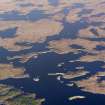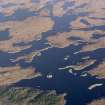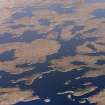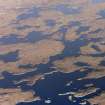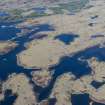Pricing Change
New pricing for orders of material from this site will come into place shortly. Charges for supply of digital images, digitisation on demand, prints and licensing will be altered.
Upcoming Maintenance
Please be advised that this website will undergo scheduled maintenance on the following dates:
Thursday, 9 January: 11:00 AM - 3:00 PM
Thursday, 23 January: 11:00 AM - 3:00 PM
Thursday, 30 January: 11:00 AM - 3:00 PM
During these times, some functionality such as image purchasing may be temporarily unavailable. We apologise for any inconvenience this may cause.
North Uist, Loch An Duin
Causeway (Prehistoric), Dun (Prehistoric)
Site Name North Uist, Loch An Duin
Classification Causeway (Prehistoric), Dun (Prehistoric)
Canmore ID 10351
Site Number NF87SE 18
NGR NF 89309 74168
Datum OSGB36 - NGR
Permalink http://canmore.org.uk/site/10351
- Council Western Isles
- Parish North Uist
- Former Region Western Isles Islands Area
- Former District Western Isles
- Former County Inverness-shire
NF87SE 18 8927 7416.
About 50 yards form the eastern shore towards the northern end of Loch an Duin, there is a small oval flat rocky islet surrounded at the water's edge by a ring of tumbled stone, evidently the remains of a defensive wall, entirely destroyed except perhaps on the western side, where outside a small rock there seems to be one course of the outer face of the wall. The dun measures some 43ft from east to west and 34ft from north to south.
The island is connected to the eastern shore by a deeply submerged zig-zag causeway with one (RCAHMS 1928) or two (E Beveridge 1911) gaps in it.
RCAHMS 1928; E Beveridge 1911.
The island at NF 8927 7416 is largely artificial, composed mainly of loose rubble stones on and around natural rock. No internal structure could be identified but the causeway is distinct though submerged. The gaps could not be located.
Visited by OS (R D) 21 June 1965.
Field Visit (20 August 1915)
Dun, Loch an Duin.
Towards the northern end of Loch an Duin, about 3/8 mile north-east of Dun Torcuill (NF87SE 3), is a small rocky islet, rising about 3 feet above the water and lying some 50 yards from the eastern shore of the loch, to which it is connected by a deeply submerged causeway with a rather zigzag course. Towards the landward end of the causeway there are indications of a break, about a yard across, possibly intentional. The islet is oval and is surrounded at the water's edge by a ring of tumbled stones, evidently the remains of a defensive wall which is entirely destroyed except perhaps on the western side, where outside a small rock there seems to be one course of the outer face of the wall. The dun measures some 43 feet from east to west and 34 feet from north to south.
RCAHSM 1928, visited 20 August 1915.
OS map: North Uist xxxi (unnoted).
Field Visit (4 July 2022 - 28 July 2022)
NF 8726 7470–NF 7463 1688 The 2022 field season for the Islands of Stone project set out to investigate a number of archaeological islets located in North Uist, Benbecula and South Uist in the Outer Hebrides. The primary aim of this fieldwork was to identify datable material culture associated with crannogs (or artificial islands), with a particular focus on the Neolithic. The target sites were identified from a database of archaeological islets generated through a variety of means: evaluation of existing NRHE/HER records, data mining, machine learning and preliminary ground surveys carried out by the Uist Community Archaeology Group (UCAG). Most of the sites investigated were already recorded in the National Record of the Historic Environment (NRHE) and/or Historic Environment Record (HER), but few had previously been surveyed in detail, with the majority having received only cursory investigation from the loch shore.
The 2022 field season managed to redress this limited knowledge by investigating 37 islets in 23 lochs. Twenty-five were previously known sites recorded in the NRHE/HER; the other 12 were ‘sites with potential’ newly identified through computer-based analysis of aerial imagery (machine learning).
Survey of all sites involved two primary aspects: above water and below water investigations. The primary means of investigation was in-water inspection. This was done on snorkel for shallower sites and on SCUBA for deeper sites by a team of five divers. When deemed useful and feasible, aerial (UAV) photogrammetry and LiDAR surveys, as well as on-islet in-person inspections, were conducted to provide further information regarding the nature and construction of each islet (and perhaps indications of period, if the surface supported structures). In total, Neolithic pottery was recovered from three lochs, and one new site (which produced Iron Age pottery) was identified. Numerous additional sites produced pottery (and other material culture) and/or organics that are still being analysed. More detailed reporting will be available once analysis is completed.
Previously-known sites visited (Grid Reference, Site Name,
Canmore ID):
NF 74696 75332, Eilean Domhnuill, 10069
NF 76612 74375, Loch nan Gearrachun, 10087
NF 76752 74189, Loch nan Gearrachun, 10076
NF 7678 7382, Loch nan Clachan, 10094
NF 8075 7266, Dun Eashader, 10375
NF 8726 7470, Oban Trumisgarry, 10353
NF 89076 74551, Dunan Dubh, 10367
NF 89309 74168, Loch an Duin, 10351
NF 89612 73914, Loch Bru, 10369
NF 8075 6450, Clachan, 10256
NF 8456 5757, Loch An Fhaing, 10191
NF 7985 4916, Gunisary Bay, 9922
NF 7969 4592, Loch an Daill, 9921
NF 76707 35686, Tobha Bheag, 270754
NF 76800 35678, Tobha Bheag, 270753
NF 76 30, Ormiclate, 9894
NF 74486 31154, Ormacleit, 270831
NF 7445 2723, Kildonan, 9846
NF 74824 25883, Loch Cnoc a’ Buidhe, 9826
NF 7427 1919, Eilean Chreamh, 9794
NF 7462 1907, Dun na Cille, 9788
NF 7468 1692, Loch an Eilean, 270796
NF 7463 1688, Loch an Eilean, 270812
NF 88885 73730, Dun Torcuill, 10364
NF 8430 6090, Dun Ban, 10261
Newly identified site (Grid Reference, Site Name, Canmore ID): NF 81130 48686, Ob Saile, 373291
Stephanie Blankshein, Duncan Garrow and Fraser Sturt – University of Southampton and University of Reading
(Source: DES Volume 23)















